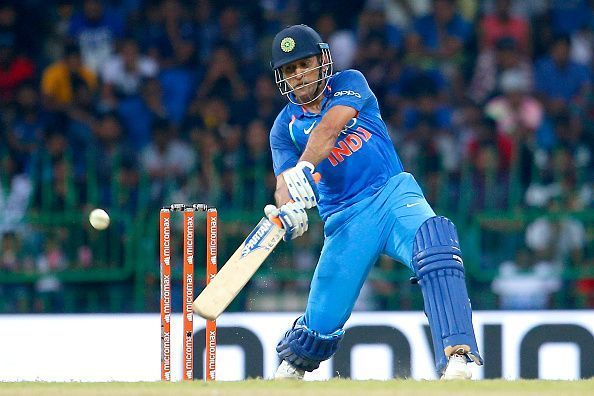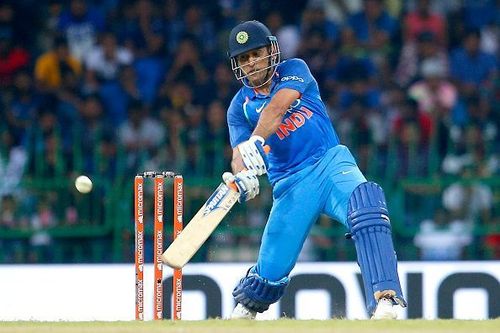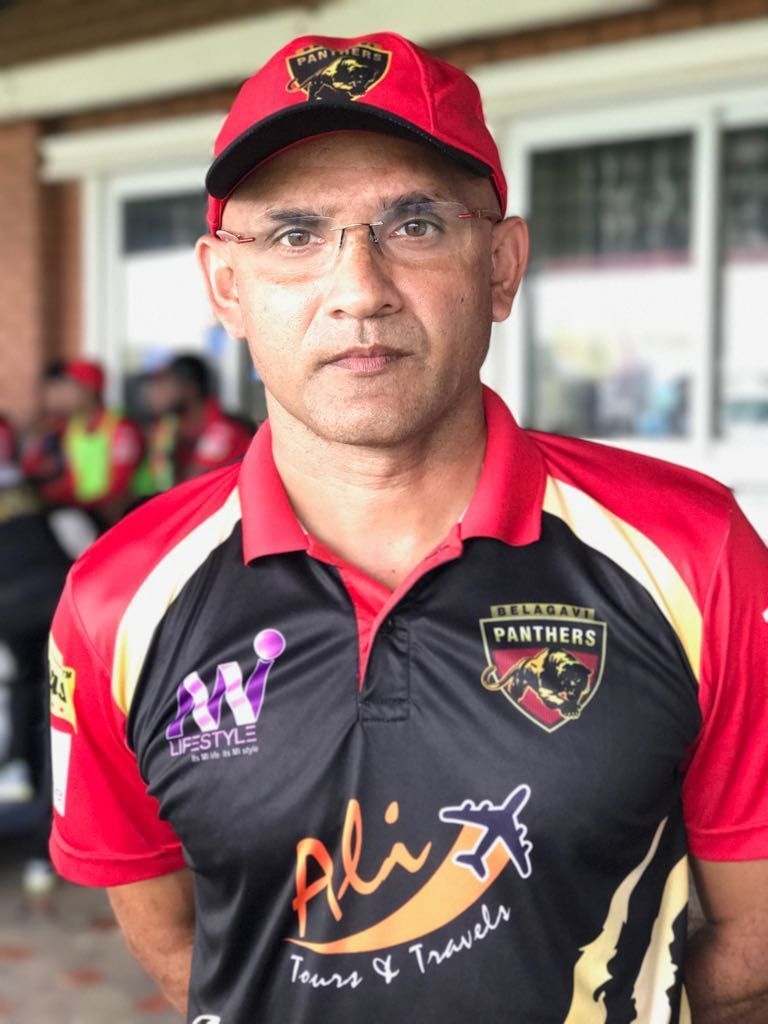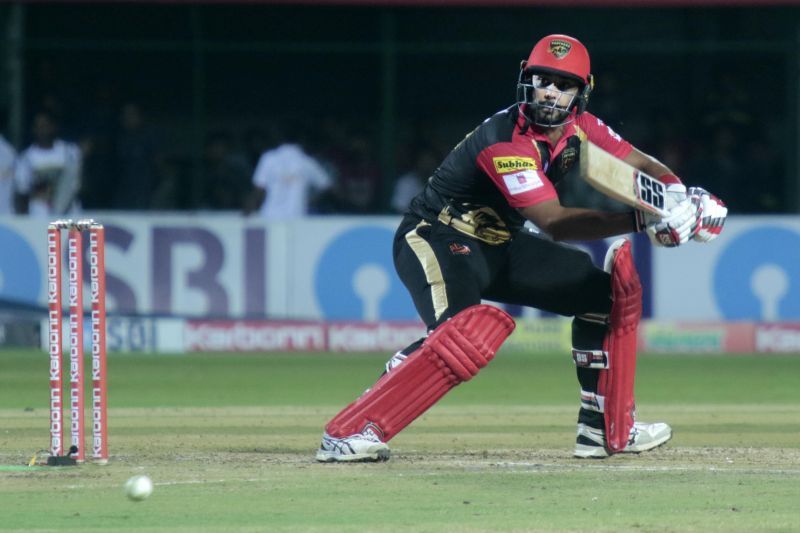
Interview with Marvan Atapattu: "Haven’t seen a better finisher than Dhoni in the last quarter of a century"

Once proud world champions, the Sri Lankan side, in their present state, struggling to even automatically qualify for the World Cup, have come down more than a few notches in terms of quality, as compared to their predecessors.
Marvan Atapattu was at the helm of the national side when the going was far better, big names used to adorn team sheets and the competition with other Test playing nations wasn't as lop-sided.
With close to 15,000 international runs to his name, Atapattu, a prime example of resolve and mental strength, overcame a stuttering start to his international career to end as one of the greats of his country. Only five players have more double-centuries than Atapattu in Test cricket history.

Having visibly aged since his last coaching assignment [with the Sri Lankan national side till 2015], the 46-year-old, just like during his playing days, was thoughtful and articulate while speaking to Sportskeeda in Mysuru. In an exclusive chat, the Sri Lankan touched upon various facets of the game, a couple of days after joining the Karnataka Premier League as a mentor with the Belagavi Panthers.
Here are excerpts from the interview:
Before joining the Belagavi Panthers in the KPL, you had coached the national sides of Singapore and Canada. Was it a conscious effort on your part to work with developing teams and build their game? What attracted you to cricket in India?
I thought it was an opportunity to work with a different set of players. Recently, my work had been with the elite, the Sri Lankan team, with whom I was associated for four to five years in different capacities.
I believe that one’s knowledge, when being passed on to a certain group, is very hard to keep on pressing, beyond a point, unless you enhance that knowledge. I thought my experience and knowledge would be helpful to a group of youngsters, and I accepted this [role] when it cropped up.
With Singapore, it was totally different, that’s when I started my coaching after completing my playing career. They are in a different league, as compared to Canada, who still play division two.
Sri Lanka are totally different, they are a Test playing nation. Now what I am doing here is also different because these are young budding cricketers who are talented and on the big stage, mingling and rubbing shoulders with the media, going in front of the camera and getting ready to play the big leagues. These are totally different teams which I have handled in my coaching career, making it a different experience for me as well.
A number of T20 leagues are now cropping up across the world. How important are these in the development of world cricket?
The IPL has done a whole lot of good for Indian cricket. Through a competition like that, India have found out the cricketers who will represent them in the future. However, there are a limited number of teams that you can have in a high-class competition like that.
Amongst one billion people in such a big country, you still have room for leagues like these, state-wise, to come and feed the mainstream. Hopefully the next step for these guys will be the IPL and the ultimate goal will follow, playing for India.
On similar lines, do you think the Sri Lanka Premier League, organised first in 2012 but disbanded in 2013, should also be reinstated?
Looking at all the success that the countries who have run such T20 tournaments have had, Sri Lanka should definitely start something similar. But they should have a good set of people who manage it and not just for the sake of conducting such a tournament.
It should be governed by a good set of knowledgeable administrators. In the past, I don’t think it went the way the organisers had planned. Now, these [IPL and other T20 leagues] are good lessons. They [organisers] will be a bit more experienced now, and if it restarts, it’ll be a big success.
What do you think has been lacking in Sri Lankan cricket, especially after what happened in the last month and a half [nine-nil loss to India across all three formats]?
Well, the obvious thing is that once the senior players [Tillakaratne Dilshan, Kumar Sangakkara and Mahela Jayawardene] left, the planning wasn’t really good enough for the youngsters to take over. Those are big boots to fill, but Sri Lanka had plans and hopes for the likes of Dinesh Chandimal and Lahiru Thirimanne.
Beyond that, even with those two, the exposure that Sri Lanka gave them batting in those important and vital spots was not enough.
The way forward is to select people who they think can do well, but, if one can be good today, he can’t be bad tomorrow. If you put faith in people and give them a long rope, it’ll do the players and the team a world of good.
One of the team’s senior players, Lasith Malinga, recently said that he intends to play till 2023. Does that make him an automatic choice for the 2019 World Cup? How do senior players assess the time left in their game?

In my opinion, no one is an automatic choice. You know your body better than anyone, especially when you are experienced. It is good to have that attitude, but I also believe that when the time comes, when the mind says I have gone the distance, that’s the time you need to hang up your boots.
It's good to have attitude when you are playing, but from time to time, especially when you are older, you have to reconsider especially when you are not performing the way you used to.
Players like him [Malinga] should leave a legacy behind, and not let others question why he is not calling it quits. A player like him who has set that kind of a standard needs to be very careful.
What similarities and differences do you see in the domestic setups of Sri Lankan and Indian cricket?
Quality of cricket in the domestic structure is one aspect. In India, the domestic structure has four-day games with fewer teams, and whoever emerges from those teams is basically ready to play for India and rub shoulders with international cricketers and teams.
For Sri Lanka, it is going the other way round. We had a good school structure, we even had school cricketers directly going on to represent Sri Lanka. We also had a good club structure with fewer clubs competing, ensuring quality and competition between the clubs and players.
But it has taken a turn for the worse, for reasons that shouldn’t have been, and we are paying for it. When you go back and take decisions that are not good for cricket, for you to come back and revert to the original ones, will need some taking. It is a bit of a shame on the people who did that.
You were on the field, captaining the Lankans when MS Dhoni played his career-defining knock (183* at Jaipur) in 2005. How do you assess his growth as a player since then to become what he is now?
I first saw him when he scored the hundred against Pakistan [148 at Vizag in his fifth ODI]. To be very honest, it was like someone coming and playing a once-in-a-lifetime knock, but then I witnessed it again, this time on the field, when he got that 183 at Jaipur.
He may not have a copybook technique, but the mental strength that he possesses, coupled with, more than anything, the ability to read the game, separates him from the world, forget India.
He can calculate and take risks when needed: I haven’t seen a better finisher in the last two-and-a-half decades. You can talk about Javed Miandad, Michael Bevan and Arjuna Ranatunga, but the way he has reached where he is, without really being a textbook player, is phenomenal.
Dhoni’s successor is already scaling peaks at a breathtaking speed. In what aspects can Virat Kohli improve his captaincy?

As a cricketer, we all believe, not just Virat, that we are still learners of this great game. There will be something you will learn from every match. Unfortunately, under pressure, we tend to make the same mistakes, the one-percenters, over and over again.
When you are in front of 100,000 people, when the pressure is on your shoulders, it is not easy to not commit the same mistakes you have made in the past.
I can’t pinpoint one thing. As captains, we should all be open to improvement, criticism and take the positives and move forward.
You went on to become one of Sri Lanka's greats, but the start of your career wasn't a typically good one [five ducks in first six innings]. How does one motivate oneself when obstacles like these come early in one's career, and what advice would you give youngsters?
When you have been given an opportunity and you’re facing competition, it doesn’t mean that what you like until then, you give it all up. You will be doing a million things that way. Failures, especially in cricket are guaranteed, for the players and the team.
But, if you are dedicated and self-confident, there is no reason for you to not try. You have sacrificed, till 20-30, and put in a lot of effort and time. One go, two go, in my case it was three goes [to get one run]. That doesn’t mean you give up.
I was lucky people had faith and patience in me. If not for that, even if I was not playing for Sri Lanka, I still would have been playing club cricket. That gave me pleasure.
Three matches, five ducks...I would have gone back and played club cricket.
You have been with the Panthers for a few days now. What has been your first impression of the side and the league itself?

I am very pleased with what I have seen in terms of infrastructure: I am referring to the ground conditions, wickets, and the quality of cricket that these people play. I am very impressed.
I honestly didn't think it was this good. Whatever I have seen of the players has been fantastic. I have seen the IPL and different leagues around the world, on the television. Having seen them perform with my very own eyes, I can say with confidence that there isn’t much of a gap. But, handling pressure situations is the key going forward.
[On specific players that he has seen in the side] I have seen a lot of Stuart [Binny], who has made the cut already. I have seen only glimpses of the rest. I see a lot of talent and I wish I could see someone face six balls and say that he is Team India potential, but I will have to probably wait to see a bit more.
What do you perceive the future of a state-based T20 league like KPL to be?
It should grow from strength to strength. The quality in the tournament itself is closing in on the benchmark, the IPL, which helps bridge the gap. Hopefully, the players going to the IPL from here won't feel much of a difference when they hit the big league.
That’s a different league altogether, you are rubbing shoulders with the best in the world. It is good to have some of those players come here and play as well.
Whoever is available, whoever qualifies to play for Karnataka, should come and play, only then they'll bring the experience back to these youngsters. Because that matters a lot in T20s.
You have travelled with multiple teams in the past. How have the Belagavi Panthers set-up and management been? What are your plans after this?
The management and owners [Ali Ashfak Thari] have been fantastic. Unless you are a good man-manager, it is difficult looking after 20 different people in different ways since each one has his own way of being comfortable. To please everyone is not a joke. Unless you have the correct personnel to handle all this, the stay and party won't be as joyful. I see it [the franchise] going right through till the end and on for a number of years.
[On the future] No specific plans. I have spent a lot of time travelling, playing and coaching. Cricket has been my life since the age of 18, when I started touring for Sri Lanka. It has come to a stage where I need to spend quality time with my family, because I never got time with my three daughters and wife during my playing career.